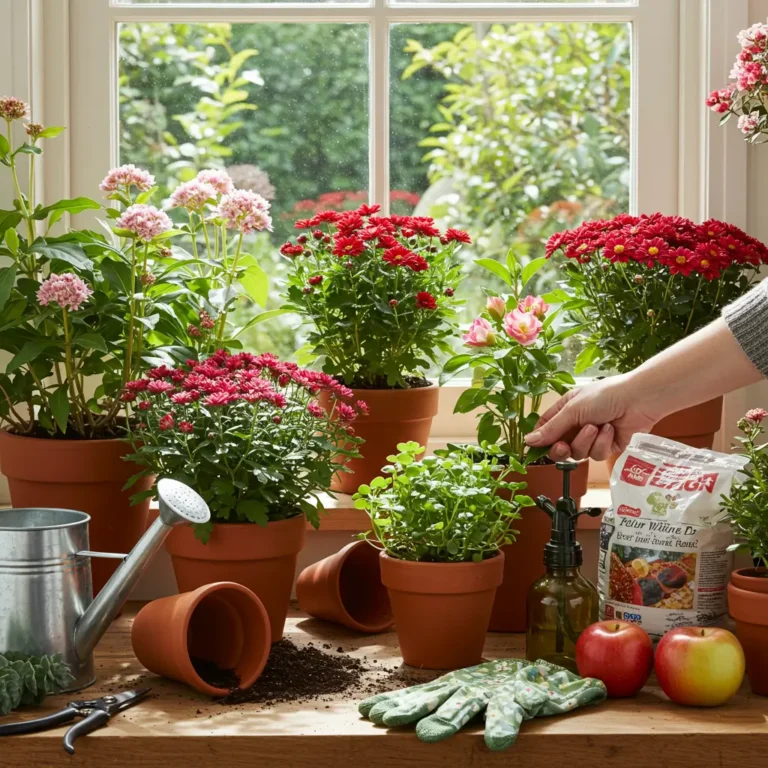The allure of a carousel plant, with its often vibrant colors and unique characteristics, can be a delightful addition to any garden or indoor collection. Ensuring its health and encouraging robust growth hinges on providing the right care. Just as a carousel features a variety of captivating figures, the term “carousel plant” can refer to several distinct species, each with its own particular needs for thriving.
Table of Contents
Understanding the Essentials of Carousel Plant Care
Whether you are cultivating a Carousel Apple for its potential fruit, a Carousel Mountain Laurel for its striking blooms, a Chrysanthemum Red Carousel for its late-season color, an Echeveria Compton Carousel prized for its variegated foliage, or a Hibiscus Moscheutos Carousel Pink Candy for its bold flowers, understanding the fundamentals of their care is paramount.
This guide will delve into the essential aspects (care of carousel plant), offering insights into optimal watering techniques, ideal light exposure, appropriate soil mixtures, and other crucial factors that contribute to a thriving carousel plant. By understanding these core principles, you can confidently provide the necessary care to help your carousel plant flourish and bring lasting beauty to your space.
Step 1: Know Your Carousel – Identifying Your Plant is Key
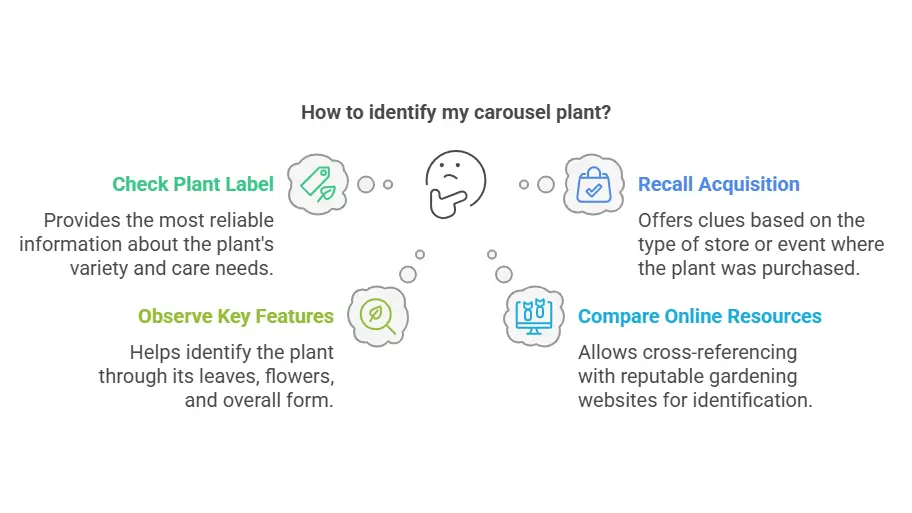
The term “carousel plant” is an engaging one, often used to describe plants with a certain visual appeal, be it colorful foliage, distinctive blooms, or an overall captivating presence. However, as you embark on providing the best care of carousel plant, the first crucial step is to accurately identify the specific variety you are cultivating. Just like the diverse figures on a carousel, the plants that go by this name can have vastly different needs when it comes to sunlight, watering, and overall plant care.
You might be the proud owner of a Carousel Apple, perhaps envisioning the day you harvest its fruit. Or, the striking pink and purple banded blooms of a Carousel Mountain Laurel might have caught your eye. Perhaps the late-season burst of color from a Chrysanthemum Red Carousel brightens your autumn garden. The captivating variegated leaves of an Echeveria Compton Carousel, sometimes also known as Lenore Dean, are another possibility. Even a bold and beautiful Hibiscus variety, such as a Carousel Pink Candy, could be what you have [as inferred].
To ensure you are providing the appropriate care, consider these methods for identifying your particular carousel plant:
- Check the Plant Label: If you purchased your plant recently, the nursery or garden center label is often the most reliable source of information. Look for the full botanical name (e.g., Kalmia latifolia ‘Carousel’) as well as the common name. This will be invaluable in finding specific care guides.
- Recall Where You Acquired It: Remembering the type of store or event where you obtained your plant can offer clues. A fruit tree likely came from a nursery specializing in edible plants, while a small, colorful succulent might have been found at a different type of retailer.
- Observe Key Features: Pay close attention to the plant’s characteristics.
- Leaves: Note their shape, size, color patterns (like variegation in the Compton Carousel), and whether they are evergreen (like Mountain Laurel) or deciduous (like Apple and many Hibiscus varieties).
- Flowers: If your plant is blooming or has in the past, the color, shape, and time of year it flowers are significant identifiers (e.g., late spring for Mountain Laurel, late summer/fall for Chrysanthemum).
- Overall Form: Is it a tree (like the Carousel Apple), a shrub (like the Mountain Laurel or Rose of Sharon varieties that might carry the “Carousel” name), a low-growing succulent (like the Echeveria), or a perennial flower (like the Chrysanthemum or Hibiscus [as inferred])?
- Compare with Online Resources: Once you have some descriptive details, searching online using terms like “carousel plant pink flowers,” “carousel plant variegated leaves,” or “carousel plant fruit” can help you narrow down the possibilities. Look for reputable gardening websites and plant identification guides. Sources like can provide visual references and care information once you suspect a particular type.
Once you have confidently identified your specific carousel plant, you can then focus on understanding its unique requirements for light, water, soil, and nutrients, ensuring you provide the best possible care of carousel plant to thrive and enhance your garden or home. Remember, proper identification is the cornerstone of successful plant care.
Step 2: The Core Needs – Light, Water, and Soil
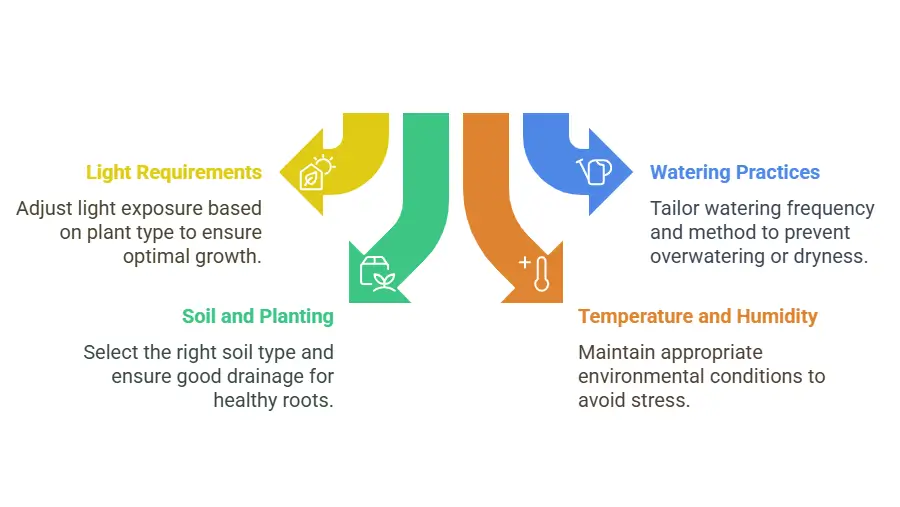
Once you have accurately identified your specific “carousel plant,” you can delve into the nuances of its care. While the term encompasses a variety of plants, a few core principles underpin the successful cultivation of most. This guide provides adaptable steps, reminding you that the precise needs will vary depending on whether you are tending to a Carousel Apple, providing care for a Carousel Mountain Laurel, nurturing a Chrysanthemum Red Carousel, looking after an Echeveria Compton Carousel, or ensuring the well-being of a Hibiscus Moscheutos Carousel Pink Candy.
1. Light Requirements:
- Observe your plant’s needs. Most “carousel plants” thrive in bright light, but the intensity can differ significantly.
- The Carousel Apple requires abundant, bright, and direct light, ideally less than one foot from a sunny window. It does not tolerate low light.
- Carousel Mountain Laurel prefers bright, sunny windows and does not tolerate low light. It thrives even in partially shaded conditions. Too much shade can reduce flowering.
- Chrysanthemum Red Carousel needs full sun.
- Echeveria Compton Carousel, being a variegated succulent, needs to be protected from intense afternoon sun, especially from May to September, and prefers a bright, filtered, or shaded outdoor location.
- Hibiscus Moscheutos Carousel Pink Candy, like most hibiscus, generally prefers full sun to promote abundant blooms.
- Adapt accordingly. If your plant isn’t getting enough natural light, consider supplementing with a grow light, especially during shorter winter days.
2. Watering Practices:
- Understand moisture preferences. The watering needs of your “carousel plant” will vary greatly.
- The Carousel Apple thrives when the soil dries slightly between waterings but still requires consistent hydration. Overwatering or saturated soil can trigger root rot in this plant. Greg recommends 0.5 cups every 9 days for a 5″ pot without direct sunlight.
- The Carousel Mountain Laurel thrives when the soil dries slightly between hydration but still requires consistent moisture. It thrives in moist but well-drained soil and is sensitive to overwatering and root rot. Greg recommends 0.5 cups every 9 days for a 5″ pot without direct sunlight. Once established, it is somewhat drought-tolerant.
- Chrysanthemum Red Carousel prefers a well-drained soil and medium water needs. Soggy winter wet is very detrimental.
- The Echeveria Compton Carousel is highly susceptible to humidity and rot. Water from below by placing the pot in a dish of water until the substrate is moist, then discard any excess water. Avoid watering when minimum temperatures are below 8°C or above 32°C maximum or 20°C minimum continuously. Water when the leaves become wrinkly.
- For Hibiscus Moscheutos Carousel Pink Candy, maintain consistently moist soil, especially during the growing season, but avoid waterlogged conditions.
- Check soil moisture. Before watering, feel the top inch of the soil. Water when it feels dry to the touch for most varieties, but allow succulents like the Echeveria to dry out more thoroughly between waterings.
- Water thoroughly. When you do water, ensure the entire root ball is moistened. For potted plants, allow excess water to drain from the bottom.
3. Soil and Planting:
- Select the right medium. The care of carousel plant depends significantly on proper soil selection.
- The Carousel Apple is sensitive to dry soil and prefers a potting soil that retains moisture but still drains well and contains organic matter like coco coir or sphagnum moss. Repotting annually or when the plant doubles in size replenishes nutrients.
- Carousel Mountain Laurel grows best in soil that drains efficiently, enriched with organic materials such as coco coir, and supplemented with perlite or vermiculite to improve water flow. This plant thrives in soil with a pH range from mildly acidic to neutral.
- Chrysanthemum Red Carousel needs well-drained, normal soil.
- The Echeveria Compton Carousel requires a very mineral substrate to prevent waterlogging and ensure excellent drainage. A mix of 50% universal substrate and 50% pumice, volcanic gravel, or akamada is recommended. Avoid perlite and vermiculite, which retain moisture.
- Hibiscus Moscheutos Carousel Pink Candy prefers nutrient-rich, well-draining soil with a slightly acidic to neutral pH, but can tolerate slightly alkaline soil and various soil types.
- Ensure good drainage. Regardless of the specific plant, pots should always have drainage holes to prevent root rot.
4. Temperature and Humidity:
- Consider environmental conditions. Most “carousel plants” have preferred temperature ranges.
- The Carousel Apple thrives outdoors within USDA Hardiness Zones 4a–8b.
- Carousel Mountain Laurel thrives outdoors and is adaptable across USDA Hardiness Zones 4a–9b or 5–8. It can handle winters with below-freezing temperatures.
- Chrysanthemum Red Carousel is hardy in Zones 5-9.
- Echeveria Compton Carousel does not tolerate temperature changes well and cannot handle heating or air conditioning directly.
- Hibiscus Moscheutos Carousel Pink Candy are heat lovers and can withstand cold winters down to -20 degrees Fahrenheit in its hardiness zones.
- Be mindful of humidity. The Echeveria Compton Carousel is particularly sensitive to humidity. Good air circulation is beneficial for most “carousel plants” to prevent fungal diseases.
5. Fertilizing:
- Feed appropriately. Fertilizer needs vary among “carousel plants”.
- The Carousel Apple grows slowly and doesn’t require added fertilizer if repotted annually.
- Carousel Mountain Laurel also grows slowly and generally doesn’t need fertilizer if repotted yearly. An acid fertilizer formulated for azaleas and rhododendrons can be used in the spring to promote blooms.
- Chrysanthemum Red Carousel benefits from pinching back growing tips until the 4th of July to encourage bushiness and flowering.
- The Echeveria Compton Carousel may benefit from biofungicides that can activate plant growth and help fight fungal diseases.
- Hibiscus Moscheutos Carousel Pink Candy can benefit from a slow-release fertilizer in late winter or early spring if soil quality is poor.
6. Pruning and Maintenance:
- Prune as needed. Pruning helps maintain shape and encourage blooms for some “carousel plants“.
- Prune Carousel Mountain Laurel to maintain shape after flowering.
- Pinch back the growing tips of Chrysanthemum Red Carousel until early summer. Prune dead or aging leaves during spring or late autumn. Division can be done in spring if needed. Deadheading spent blooms can prolong flowering.
- Prune Hibiscus Moscheutos Carousel Pink Candy in late winter or early spring as it blooms on new wood. Trimming off faded blooms helps curb unwanted spreading via self-seeding.
- Monitor for pests and diseases. Regularly inspect your “carousel plant” for any signs of pests or diseases and address them promptly using appropriate methods. The Echeveria Compton Carousel is particularly susceptible to fungal diseases and rot. Good air circulation and proper watering are key preventative measures.
By understanding these adaptable steps and always considering the specific needs of your “carousel plant” variety, you can provide the best possible care and enjoy its unique beauty for years to come. Remember that careful observation and a willingness to adjust your plant care routine are essential for success.
Step 3 – Nourishing Growth – Fertilizing for Health (If Needed)
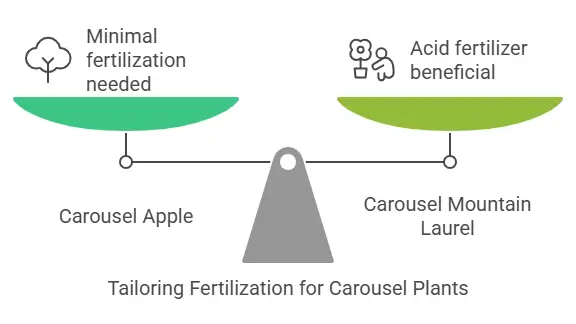
Providing the right nutrients is a key component in the successful care of carousel plant, though the necessity and type of feeding will vary considerably depending on the specific variety you are growing. It’s always best to observe your plant carefully for signs that it might benefit from supplemental nutrients.
For the Carousel Apple, it’s worth noting that these plants are typically slow growers and often do not require additional fertilizer. The nutrients present in most good quality potting soils are usually sufficient, especially if you are repotting your Carousel Apple annually or when it has doubled in size. This regular replenishment of the soil provides the necessary elements for healthy growth. Therefore, routine fertilization for a Carousel Apple is generally not a critical part of its care.
When it comes to the care of Carousel Mountain Laurel, similar considerations apply. This is also a slow-growing shrub, and repotting annually should provide adequate nutrients. However, if you wish to encourage more abundant blooms, a spring feeding with an acid fertilizer formulated for azaleas and rhododendrons can be beneficial. Observe your Carousel Mountain Laurel for vibrant foliage and good flowering as an indication of sufficient nutrient levels.
The Chrysanthemum Red Carousel, a delightful fall bloomer, generally thrives in normal soil and with medium water needs. While specific fertilization isn’t heavily emphasized in the provided information, ensuring it’s planted in good quality soil will support its growth and flowering. Pinching back growing tips until early July is more critical for encouraging bushiness and abundant blooms than regular fertilization.
Care for the Echeveria Compton Carousel requires a more cautious approach to feeding. These variegated succulents are particularly susceptible to rot, and over-fertilizing can exacerbate this issue. The focus for healthy Echeveria Compton Carousel care is on a very mineral, well-draining substrate to prevent waterlogging. While the sources don’t recommend routine fertilization, the use of biofungicides in milder seasons is mentioned as a way to activate plant growth and help fight fungal diseases, which can indirectly support the plant’s health. Observe the leaves for signs of distress, as improper watering is a far more common issue than nutrient deficiency with this type of carousel plant.
Finally, the Hibiscus Moscheutos Carousel Pink Candy, a vibrant perennial, can benefit from supplemental feeding, especially if the soil quality is poor. A slow-release fertilizer applied in late winter or early spring can provide the necessary nutrients to support its vigorous growth and abundant blooms on new wood. However, if your soil is already rich, fertilization may not be necessary.
In summary, when considering the care of carousel plant and whether to fertilize, remember that:
- Carousel Apple and Carousel Mountain Laurel often do not need routine fertilizer if repotted annually. An acid fertilizer may benefit Mountain Laurel blooms.
- Chrysanthemum Red Carousel relies more on proper soil and pruning for healthy growth.
- Echeveria Compton Carousel is sensitive; focus on well-draining soil and avoid over-fertilizing. Biofungicides might be used preventatively.
- Hibiscus Moscheutos Carousel Pink Candy may benefit from a slow-release fertilizer in poor soil.
Always err on the side of under-fertilizing rather than over-fertilizing, and pay close attention to your specific “carousel plant” variety’s needs and the condition of its foliage to guide your feeding practices.
Step 4 – Shaping Up – Pruning and General Care
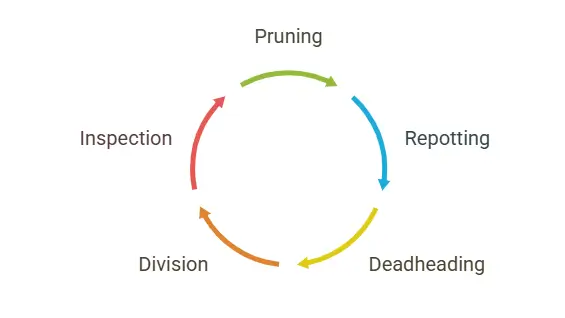
Regular attention to pruning and general maintenance plays a vital role in the overall care of carousel plant, helping to maintain its desired shape, encourage healthy growth, and even promote more abundant blooms. The specific needs will vary depending on the particular “carousel plant” you are nurturing.
For the Carousel Apple, extensive pruning is generally not required. However, if you are growing it in a container, you might consider light pruning to maintain a manageable size and shape. Repotting annually or when the plant doubles in size will also help maintain its health by providing fresh nutrients. Beyond that, remove any dead or damaged branches as they appear to ensure good air circulation.
The care of Carousel Mountain Laurel involves minimal pruning. This slow-growing shrub generally maintains a pleasing rounded shape on its own. The best time for any necessary shaping is after the flowers have faded in late spring or early summer. Avoid heavy pruning, as it can negatively impact the following year’s blooms. Regular inspection for and removal of any dead or diseased branches will contribute to the health of your Carousel Mountain Laurel.
When it comes to the Chrysanthemum Red Carousel, a bit more attention to pruning is beneficial. To encourage bushier growth and a more profuse display of its delightful fall flowers, pinch back the growing tips of the stems regularly until about the 4th of July. Simply snip off the top inch or so of the new growth. After the blooming season is complete, you can cut back the old foliage in late fall or early spring to make way for new growth from the roots. Dividing the plant in the spring can also help maintain its vigor if the center of the clump is no longer producing new growth.
The care for the Echeveria Compton Carousel focuses more on maintaining the right growing conditions than extensive pruning. These succulents are particularly sensitive to rot, so good air circulation is essential. While you might remove any dead or damaged leaves to maintain a tidy appearance, significant pruning is not typically part of their care. Propagation is often done through stem cuttings or offsets rather than traditional pruning for shape. Be gentle when handling this carousel plant due to its delicate nature.
Finally, the Hibiscus Moscheutos Carousel Pink Candy benefits from annual pruning to encourage blooming on new wood. The best time to prune is in late winter or early spring, before new growth begins. You can cut back the stems to about 6-12 inches from the ground. Removing dead or weak stems at this time will also promote a healthier and more floriferous plant. Deadheading spent flowers can prevent self-seeding, if desired, and may encourage further blooming.
In summary, remember these key points for the pruning and maintenance involved in the care of carousel plant:
- Carousel Apple: Light shaping if needed, remove dead or damaged branches. Repot annually or when doubled in size.
- Carousel Mountain Laurel: Minimal pruning after flowering to maintain shape, remove dead or diseased branches.
- Chrysanthemum Red Carousel: Pinch back growing tips until early July for bushier growth, cut back old foliage after blooming, divide in spring if needed.
- Echeveria Compton Carousel: Remove dead or damaged leaves, focus on proper growing conditions for health.
- Hibiscus Moscheutos Carousel Pink Candy: Prune back hard in late winter or early spring to encourage new growth and blooming, deadhead spent flowers.
By understanding the specific maintenance needs of each “carousel plant” variety, you can ensure they remain healthy, shapely, and a beautiful addition to your garden or home. Consistent observation will also help you address any potential issues early on.
Step 5 – Staying Vigilant – Addressing Common Problems

Even with the best intentions, you might encounter a few hurdles in the care of carousel plant. Recognizing these common issues early can make all the difference in maintaining a thriving and beautiful plant. Here’s a guide to some potential problems and how to address them for the different types of “carousel plants” we’ve discussed.
When providing care for your Carousel Apple, keep an eye out for yellowing leaves. While a few older leaves yellowing and dropping is natural, if new leaves are turning yellow or all the leaves change color at once, it could indicate a problem. Overwatering is a common culprit with Carousel Apple, as they are sensitive to wet soil and can develop root rot. You might also notice curling or drooping leaves with overwatering. Ensure your potting soil retains moisture but also drains well. Conversely, though less common, underwatering or nutrient deficiencies could also cause yellowing. Remember that this type of carousel plant generally doesn’t require added fertilizer; repotting annually refreshes the soil.
For the care of Carousel Mountain Laurel, similar leaf issues can arise. Yellowing, curling, or drooping leaves often signal overwatering and potential root rot, as this plant prefers well-draining soil. It’s crucial to avoid soggy conditions. While nutrient deficiencies are less frequent, if you wish to encourage more blooms, a spring feeding with an acid fertilizer is recommended. Avoid excessive fertilization, though.
The Chrysanthemum Red Carousel, a vibrant fall bloomer, can face its own set of challenges. If you notice a lack of abundant blooms, ensure it’s receiving full sun. Also, remember the importance of pinching back growing tips until early July to encourage bushiness and more flowers. Soggy conditions in winter are very detrimental to these mums. Watch out for fungal diseases, especially in cool, damp weather. Good drainage is key.
Providing proper care for the Echeveria Compton Carousel often revolves around preventing rot. Wrinkly leaves can indicate the need for water. However, be cautious, as this succulent is highly susceptible to rot from overwatering and excessive humidity. Always water from below, allowing the substrate to become moist and then draining any excess. A mineral-rich, well-draining substrate is essential to avoid waterlogging. Avoid moisture-retaining materials like perlite and especially vermiculite. This carousel plant is also prone to fungal diseases. Good ventilation is crucial. In milder seasons, preventative treatments with biofungicides or copper salts can be considered.
Finally, with the care of Hibiscus Moscheutos Carousel Pink Candy, problems might include a lack of flowering. Ensure it’s planted in full sun. Pruning in late winter or early spring encourages blooming on new wood. Both too little or too much moisture can cause stress, leading to flower buds and leaves dropping. Yellowing leaves can also be a sign of overwatering and poor drainage.
Here are some general tips for troubleshooting the care of carousel plant:
- Inspect leaves regularly for changes in color, texture, or the presence of spots or pests.
- Check soil moisture before watering. Allow the top inch or two to dry out for most varieties, but remember the Echeveria Compton Carousel prefers a very well-draining mix that dries out quickly.
- Ensure your plant is receiving the appropriate amount of light for its specific type.
- Be mindful of temperature and humidity levels, as drastic changes can stress your plant.
- Good air circulation is vital for preventing fungal diseases, especially for succulents like the Echeveria Compton Carousel.
- If you suspect pests, isolate the affected plant to prevent spread and treat with appropriate methods.
By paying close attention to your specific “carousel plant” variety and addressing issues promptly, you can overcome common challenges and enjoy a healthy and vibrant plant. Remember, observation is one of the most valuable tools in successful gardening.
In closing, remember that the umbrella term “carousel plant” encompasses a delightful variety of plants, each with its own unique charm and specific requirements for thriving. Whether you are nurturing the fruiting potential of a Carousel Apple, admiring the evergreen elegance of a Carousel Mountain Laurel, enjoying the late-season burst of color from the Chrysanthemum Red Carousel, appreciating the intricate beauty of the Echeveria Compton Carousel, or captivated by the vibrant blooms of the Hibiscus Moscheutos Carousel Pink Candy, understanding their individual needs is paramount in providing the best possible care.
Providing the proper care for your carousel plant – which includes attention to sunlight, watering, soil, and sometimes pruning and fertilization – will be richly rewarded. You’ll be greeted with healthy growth, abundant blooms where applicable, and the satisfaction of nurturing a living thing.Remember to observe your specific “carousel plant” closely. Its leaves, stems, and flowers often provide valuable clues about its well-being. By paying attention to these signals and adjusting your care routine as needed, you can ensure your carousel plant remains a vibrant and enjoyable part of your garden or home. The journey of providing care of carousel plant is an ongoing learning experience, so embrace the process and enjoy the beauty these unique plants bring.

